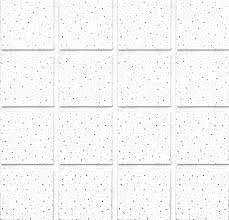- Afrikaans
- Albanian
- Amharic
- Arabic
- Armenian
- Azerbaijani
- Basque
- Belarusian
- Bengali
- Bosnian
- Bulgarian
- Catalan
- Cebuano
- Corsican
- Croatian
- Czech
- Danish
- Dutch
- English
- Esperanto
- Estonian
- French
- German
- Greek
- Hindi
- Indonesian
- irish
- Italian
- Japanese
- Korean
- Lao
- Malay
- Myanmar
- Norwegian
- Norwegian
- Polish
- Portuguese
- Romanian
- Russian
- Serbian
- Spanish
- Swedish
- Thai
- Turkish
- Ukrainian
- Uzbek
- Vietnamese
Nov . 22, 2024 12:59 Back to list
ceiling grid tie wire
Understanding Ceiling Grid Tie Wire An Essential Component in Suspended Ceilings
Suspended ceilings, often referred to as drop ceilings, are popular in commercial and residential structures due to their aesthetic appeal and functionality. One of the critical components that contribute to the stability and safety of suspended ceiling systems is the ceiling grid tie wire. This article explores the significance, installation process, and benefits of using ceiling grid tie wire in suspended ceiling construction.
What is Ceiling Grid Tie Wire?
Ceiling grid tie wire is a type of support wire used in the installation of suspended ceilings. It provides additional security by tying the main grid to the building structure, ensuring that the ceiling remains stable and properly aligned. Typically made from durable materials such as galvanized steel, tie wire comes in various gauges to accommodate different weight loads and types of ceiling panels.
Importance of Ceiling Grid Tie Wire
The primary role of grid tie wire is to enhance the structural integrity of the ceiling frame. Suspended ceilings are often installed beneath existing ceilings and can be affected by factors such as weight load, vibrations, and air movement. Without proper support, the ceiling grid may sag or shift over time, leading to an unsightly appearance and potential safety hazards. The use of tie wire helps mitigate these issues, providing peace of mind for both contractors and building occupants.
Installation of Ceiling Grid Tie Wire
Installing ceiling grid tie wire is a straightforward process, but it requires careful planning to ensure effectiveness. Here are the general steps involved in the installation
1. Planning the Layout Prior to installation, it’s important to plan the layout of the ceiling grid system. Measure the area and determine the placement of main tees and cross tees.
2. Vertical Support Secure the main grid to the building structure using mounting clips or brackets, ensuring it is level. The tie wire will attach to these points, providing additional support.
ceiling grid tie wire

3. Cutting Tie Wire Cut the tie wire to the appropriate length, keeping in mind the distance from the grid to the structure above.
4. Attaching the Tie Wire Loop the tie wire over the grid and attach it to the supporting structure using anchors or screws. Be sure to maintain tension in the wire to prevent sagging.
5. Final Adjustments After all tie wires are installed, make any necessary adjustments to ensure that the grid remains level.
Benefits of Using Ceiling Grid Tie Wire
Incorporating tie wire into a suspended ceiling setup offers several advantages
- Enhanced Stability By anchoring the ceiling grid to the building structure, tie wire helps prevent movement and sagging, ensuring a long-lasting installation.
- Safety Compliance Local building codes often require the use of tie wire for suspended ceilings, making it a necessary component for compliance.
- Cost-Effectiveness Installing tie wire is a low-cost method of improving the safety and aesthetic appeal of a suspended ceiling, reducing the likelihood of costly repairs in the future.
- Versatility Tie wire can be used with various types of ceiling grids and tiles, making it suitable for a wide range of applications.
In conclusion, ceiling grid tie wire is an essential aspect of suspended ceiling installations. Its role in providing stability, ensuring safety, and enhancing the overall appearance of ceilings cannot be overstated. By understanding its importance and following proper installation techniques, builders can ensure that their suspended ceilings not only look great but also stand the test of time.
-
Transform Interiors with PVC Gypsum Ceiling: A Stylish, Durable, and Moisture-Resistant SolutionNewsMay.19,2025
-
The Smart Interior Upgrade: Discover the Durability and Versatility of Gypsum Ceiling Access Panel SolutionsNewsMay.19,2025
-
The Smart Choice for Interior Design: Discover the Value of PVC Gypsum Ceiling SolutionsNewsMay.19,2025
-
Mineral Fiber Ceiling Tiles: The Smart Blend of Performance and AestheticsNewsMay.19,2025
-
Mineral Fiber Ceiling Tiles: The Superior Choice Over Gypsum for Sound and Fire SafetyNewsMay.19,2025
-
Mineral Fiber Ceiling Tiles: Eco-Friendly Strength and Style for Every CeilingNewsMay.19,2025







